Osaka
Osaka is a vibrant city. Its smaller size compared to Tokyo is a bit more to my liking. There are interesting juxtapositions of shopping areas, temples, businesses, towers, and institutions relating to all aspects of life. I walk past many places and streets that beg for my attention. It is important to keep to the day’s goal before the sun goes down. Even at this moment, I am walking to Isshin-ji temple, an unusual place known for a somber reason. To me, it is a supreme example of problem-solving.
Let’s walk on.
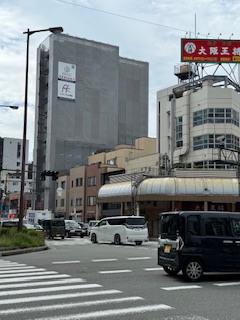
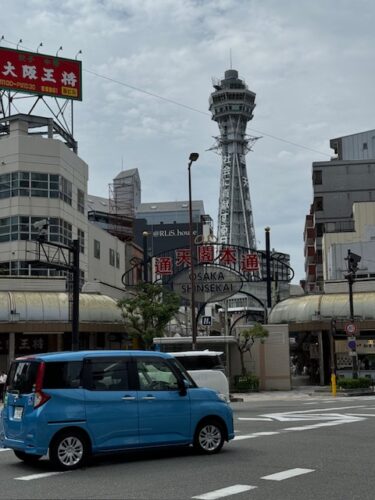
Tsutenkaku Tower, a historic Osaka landmark in the Shinsekai district, was inspired by the Eiffel Tower. After the Osaka wartime bombings, it was rebuilt in 1956. It is 103 meters tall, one-third the height of Eiffel. The Statue of Liberty is 93 meters tall.
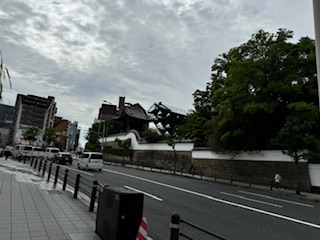
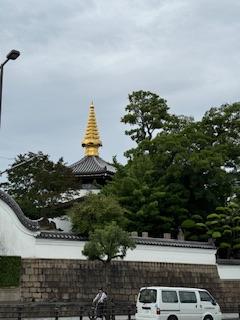
The golden spire atop the reception hall at Isshin-ji temple.
Isshin-ji Temple
Obone Buddha Temple
Isshin-ji is a Pure Land Buddhist temple founded in the 12th century.
The Meiji (1868-1912) era was the first half of the Empire of Japan. The country went from being an isolated feudal society at risk of colonization by Western powers to a modern, industrialized nation state and budding great power.
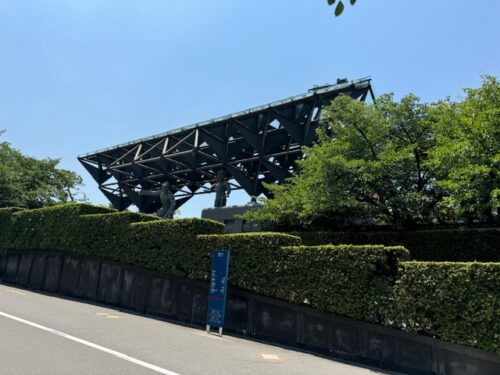
Renwang Gate (Mountain Gate)
On an initial glance, the Nio guardians at Isshin-ji Temple in Osaka give an indication that a museum is beyond the gate. It is not a museum but, like one, it is a significant repository of cultural elements.
Constructed out of steel and concrete looking like a modern art sculpture, the gate is a striking contrast to the temple within. It was designed by the current head priest who is also an architect.
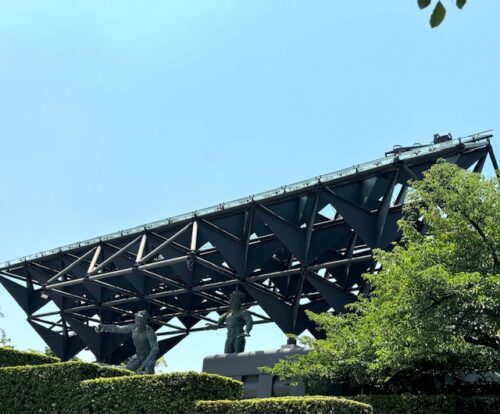
The Nio guardians loom over the street running alongside the temple.
Inside the grounds are traditional temple buildings. Many of the people in this busy, crowded space – walking, standing, and praying – at the memorial halls are not tourists. Instead, they are worshippers and mourners.
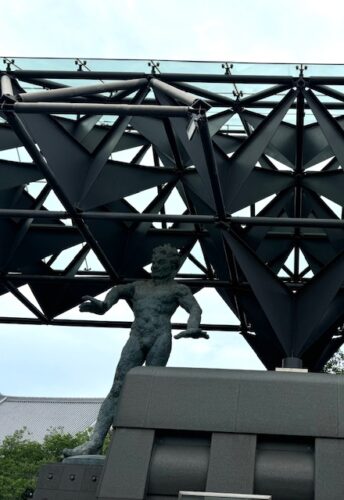
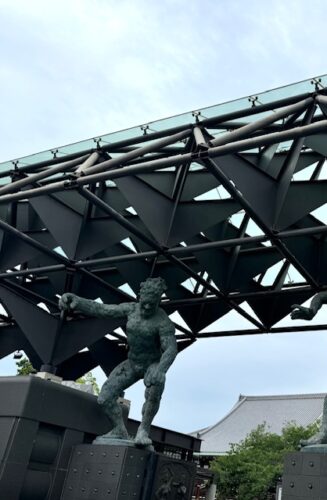


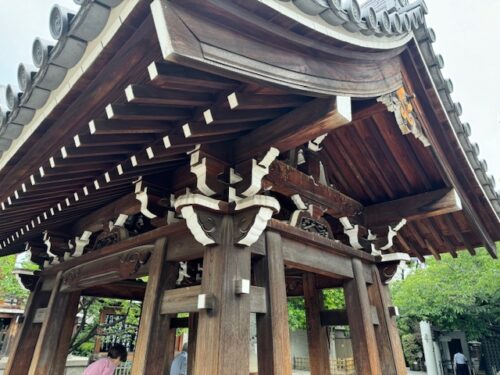
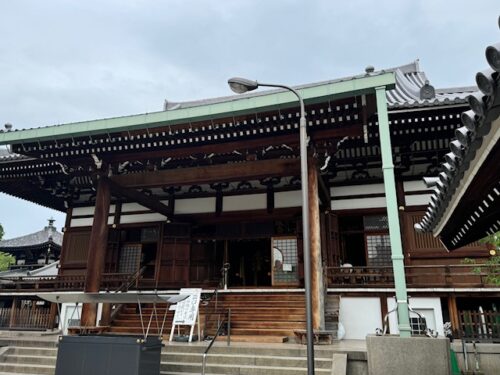
Daihondo or main hall enshrines a statue Amida Nyorai originally from Chion-in in Kyoto.
I received a goshuin for my stamp book at the office around the corner of hall. The monk who wrote my stamp was welcoming. He was a funny and joyful person.
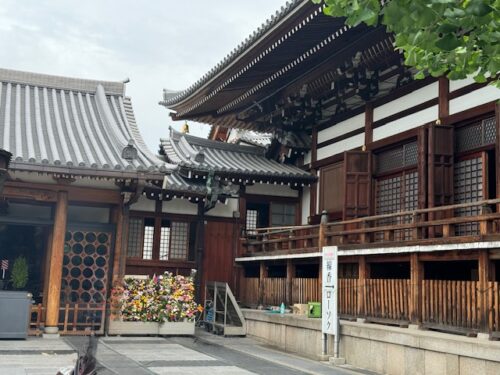
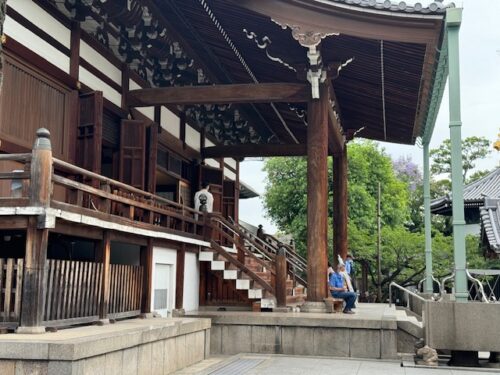
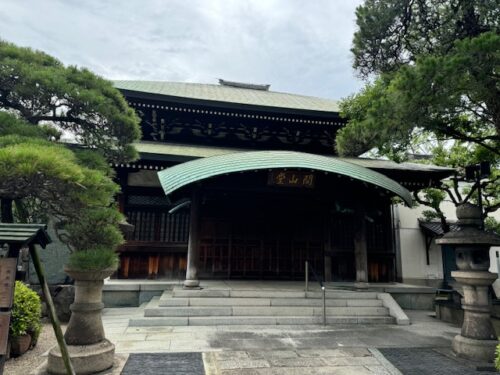
Kaisan (memorial) hall.
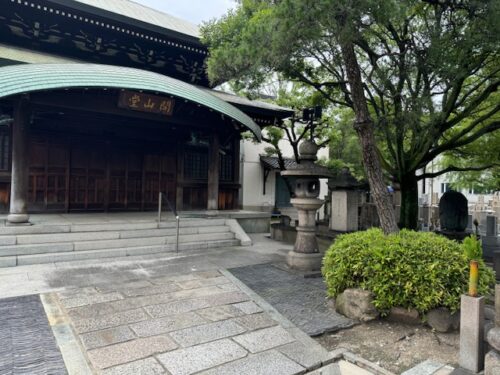
A different feeling
The temple precinct is very busy with worshippers and mourners rather than visitors and tourists. Isshin-ji houses the remains of millions of Osaka residents’ ancestors. The remains (ashes and bone fragments) are made into Okutsu Butsu or “Bone Buddha”.
In Japan, when people die the bodies are cremated and their ashes are stored in a grave or donated to a temple. By the late 19th century, Isshin-ji was running out of space to store the urns of ashes brought to the temple.
In 1887, Isshin-ji made their first Amida (Buddha) statue out of the bones of some 50,000 people.
As an ingenious solution, they combined ashes with a resin mixture which was then cast as a statue of Amida.
Six statues had been completed by the time the temple was destroyed by the air raid bombings of Osaka during World War II.
Recovered fragments of the first six statues were collected and with more ashes the seventh was completed in 1948. Since then a further six have been completed with each statue using the ashes of about 200,000 people. Now, over a million ancestors making up the Buddhas compel descendants to visit the temple and take part in memorial activities.
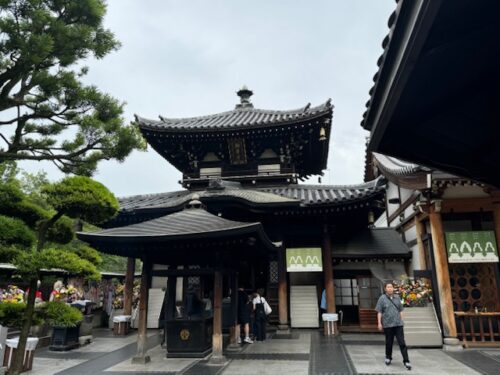
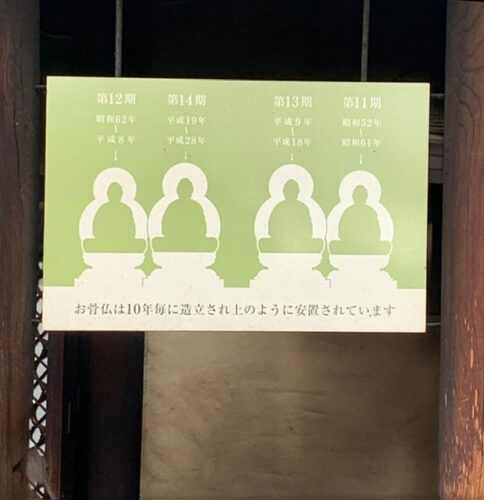
Ossuary: the Bone Buddhas are housed in this area.
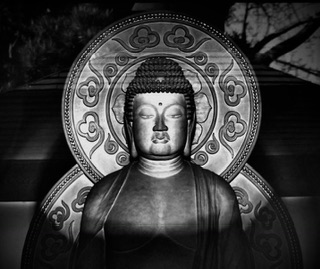
The statues are stored in two buildings, the Nokotsu-do and the Okotsubutsu-do, next to the main hall.
Meritorious Buddha
The belief is that worshipping the Bone Buddha in a memorial service to the deceased, is the same as worshipping the Buddha. It is the truly strange meritorious Buddha, which combines the spirit of worship of the Buddha and the spirit of ancestor worship, and that is the bone Buddha of Isshin-ji Temple.
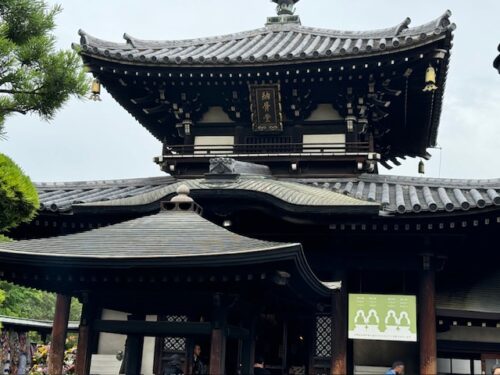
Today, Isshin-ji adds a new bone buddha statue every ten years. The next buddha is scheduled to be enshrined in 2027. Acceptance of ashes and urns is strictly regulated and specified by temple authorities.
However, Isshin-ji willingly accepts a person’s ashes regardless of that individual’s religious beliefs in life and will incorporate those ashes in their statues.
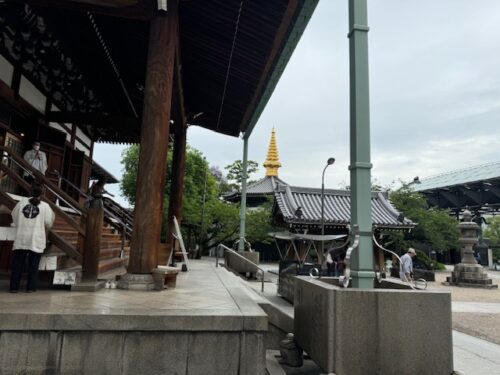
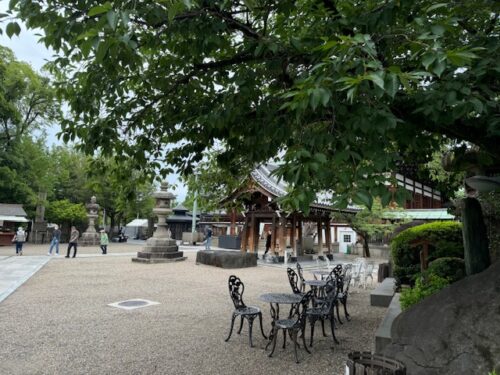
The wrought iron chairs are a fancy difference compared to the chairs and benches at the mountain temples on Shikoku pilgrimage. They provide respite and a cool place to sit.
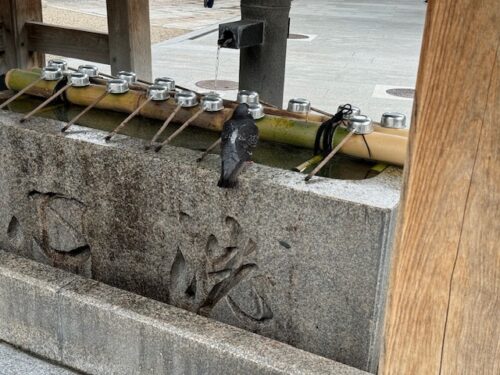
Temple fountain.
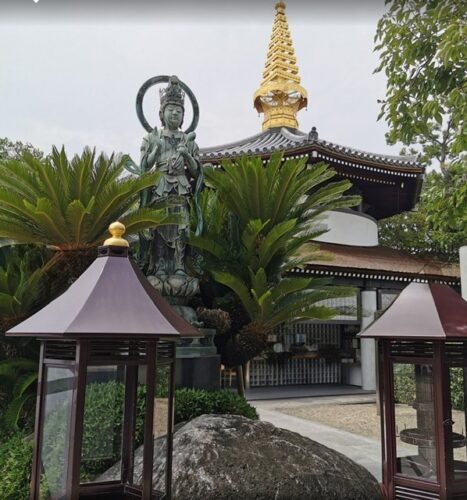
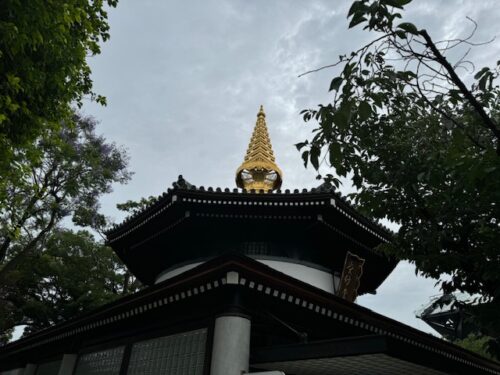
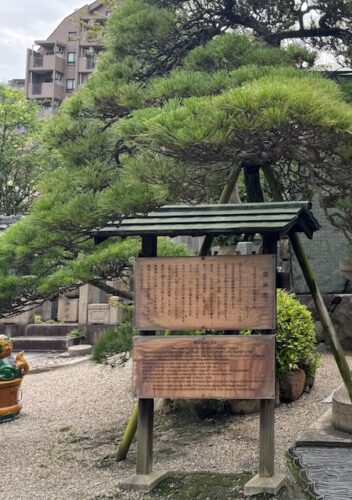
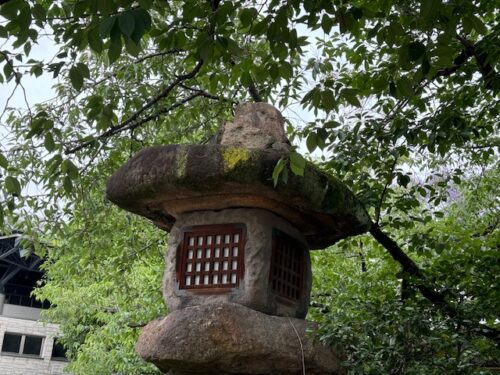
Isshin-ji contains the graves of many famous people. They are located in graveyards around the temple grounds.
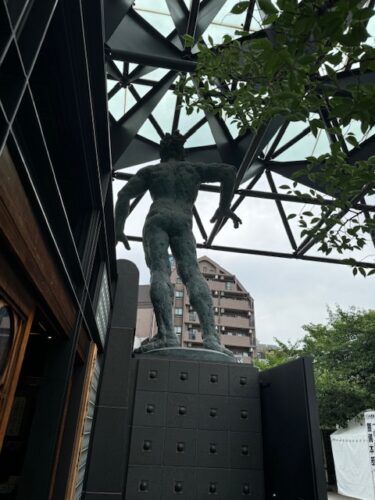
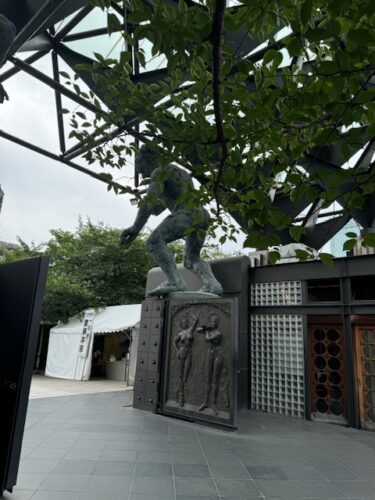
This is the view of the exit.
Isshiti-ji Sanzenbutsu-do
Outside the gate is a concrete and glass building related to Isshin-ji temple. It was designed by the same head priest.
The building, Sanzenbutsu-do, has an outstanding feature: a huge dome ceiling covered in golden statues.
You cannot miss it when you step inside.
3,000 Buddhas Hall
Though the building may not look like a temple, it enshrines roughly 1,000 Buddha statues.
Visitors walk around the statues, clockwise, and pray to the Buddhas of the past, present and future. On the first pass, you will see a thousand statues, and after three rounds, you will see three thousand, or sanzen butsu.
At different points there are larger bronze statue that each represent a different animal in the Chinese zodiac.
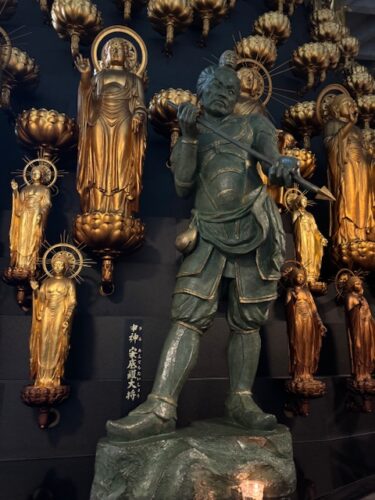
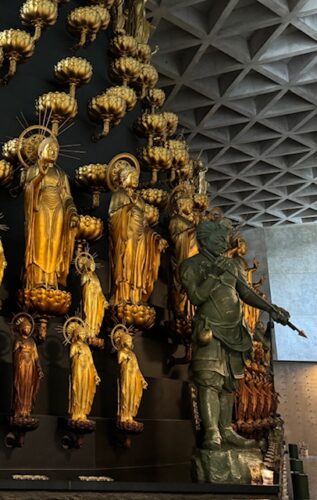
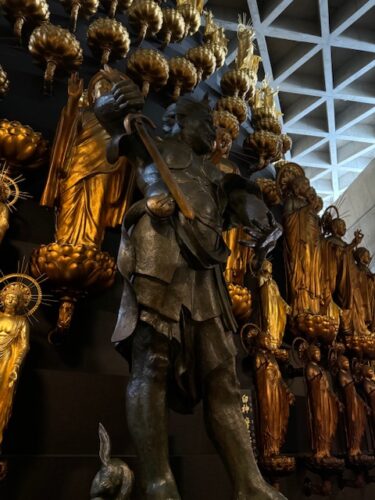
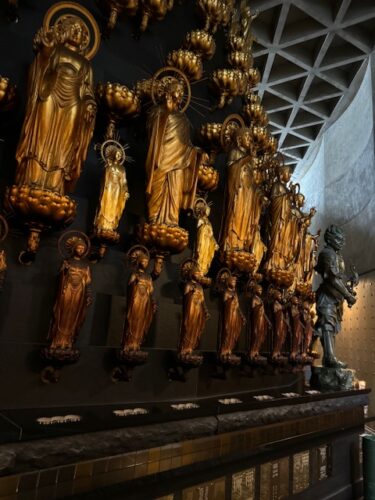
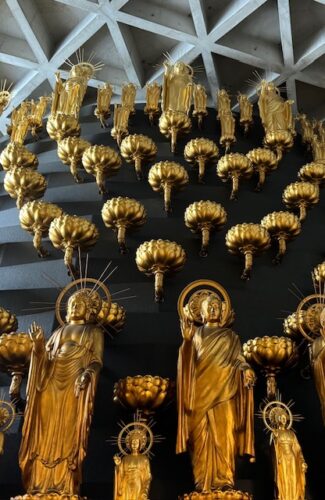
Another special feature, a room inside the dome hall features another dome painted with a large tempura mural. An altar and rows of chairs in front of the mural invite visitors to stay and pray or meditate.
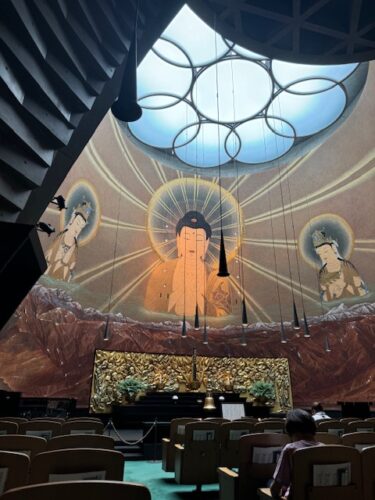
Massive mural behind the altar at the Sanzenbutsu-do.
Final thoughts
I appreciate the care and planning devoted to issues regarding death and the respectful disposal of the deceased’s remains. Often and increasingly, this has become a monumental cause of distress for those left behind, especially in my country. I believe more conversations need to be had regarding preparation (financially!) for a more peaceful farewell. ☮️
Perhaps the deepest reason why we are afraid of death is because we do not know who we are.
– Sogyal Rinpoche
See you next time.
Baadaye and Mata Ne (またね)
Shirley J ♥️
This and several posts this summer chronicled my pilgrimage in Japan where I walked the 1200 kilometer-long Shikoku 88 temple pilgrimage and beyond. Read my announcement here.

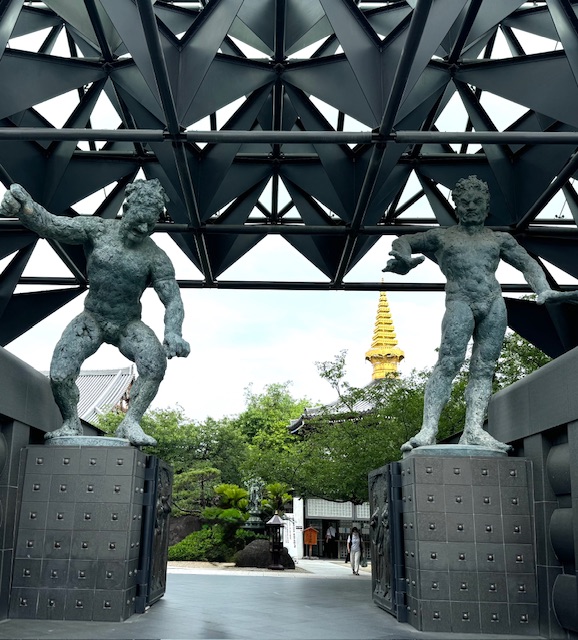
4 thoughts on “🌸 Noire Henro-san: Isshin-ji Temple”
No worries. It’s a funny story, especially since I lost the key for the trunk and had to get a locksmith out to unlock it for me (the steamer trunk is an antique that my great aunt got when she entered the convent back in the early 1900s).
“Mom’s locked in the trunk, and I lost the key!”
Poor mama! 🔒🔒
Interesting. I’ve had my mom’s ashes locked in a steamer trunk for almost a decade now, trying to decide what the right thing to do is. It does allow me to joke that I’m keeping my mom in the trunk, though.
Haha! 🧳 Forgive me!
Comments are closed.